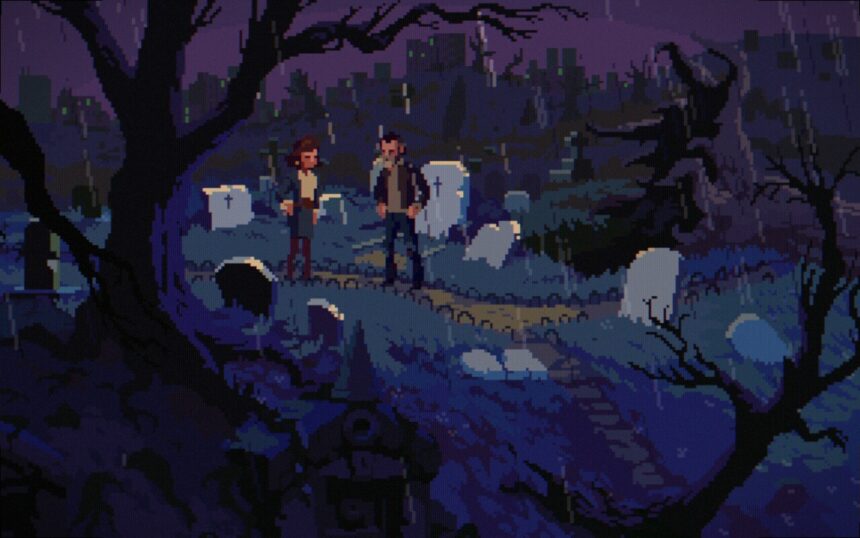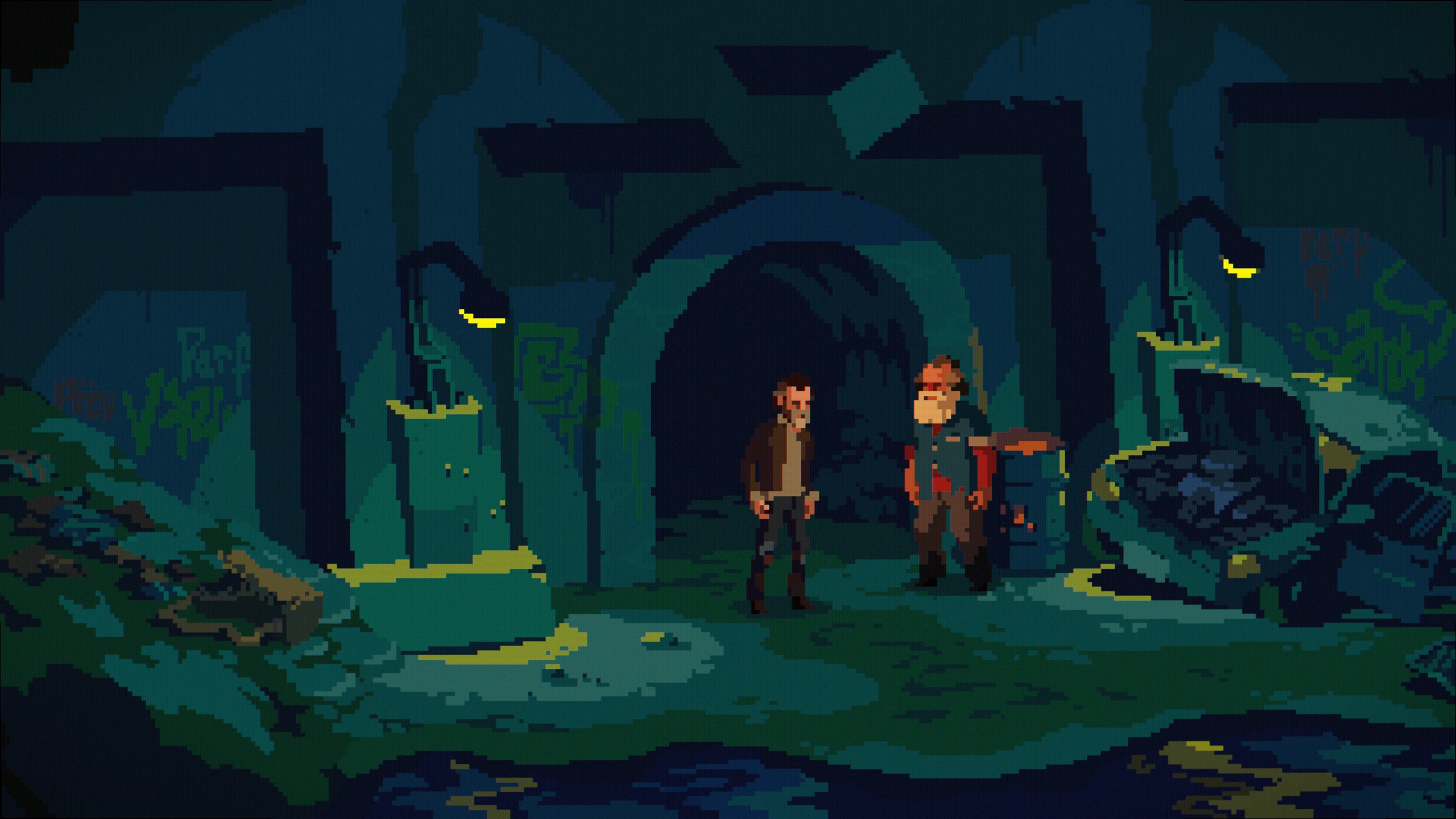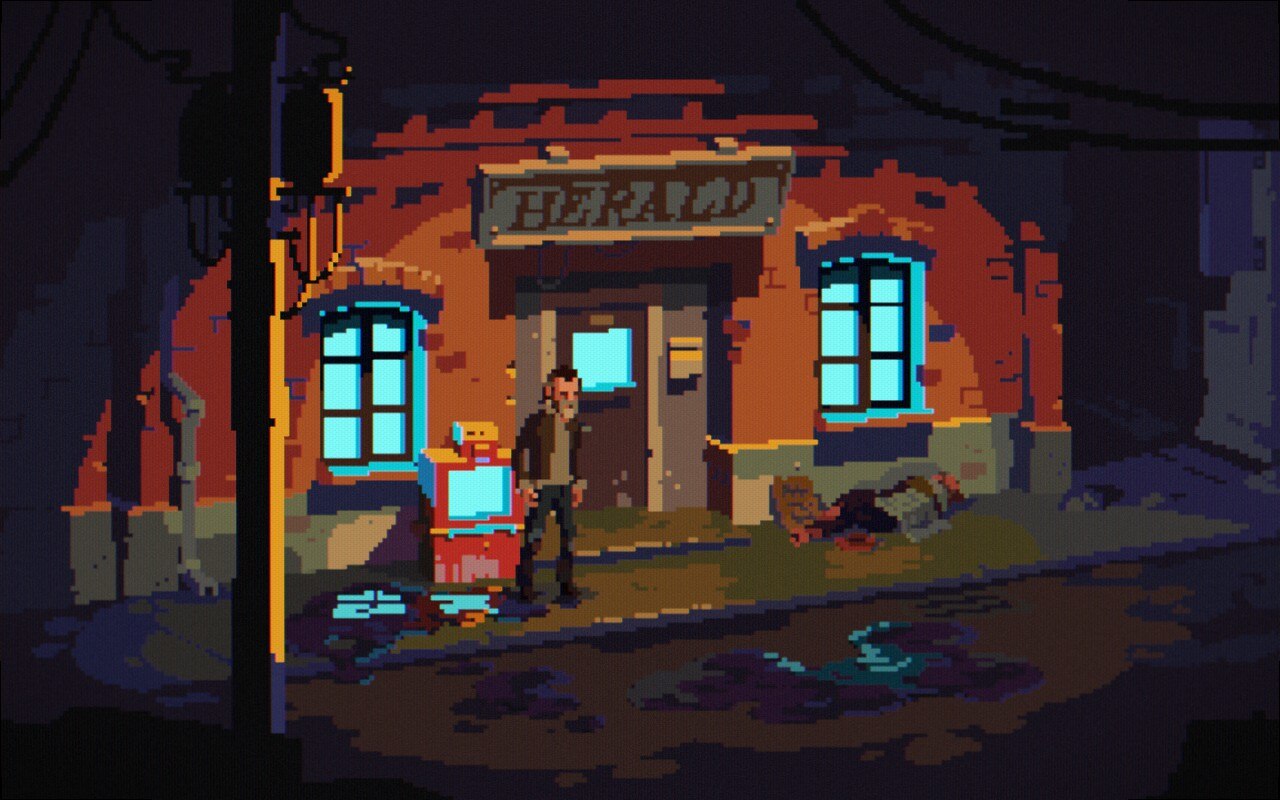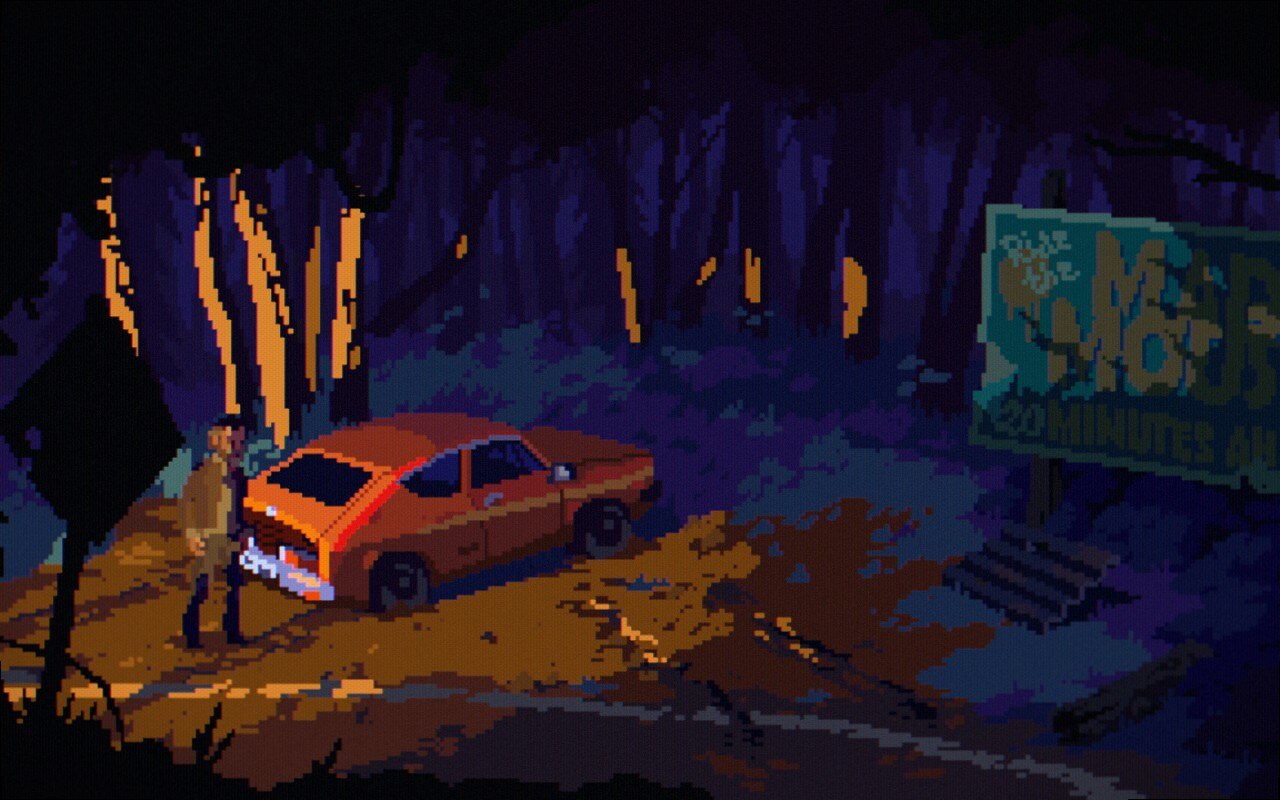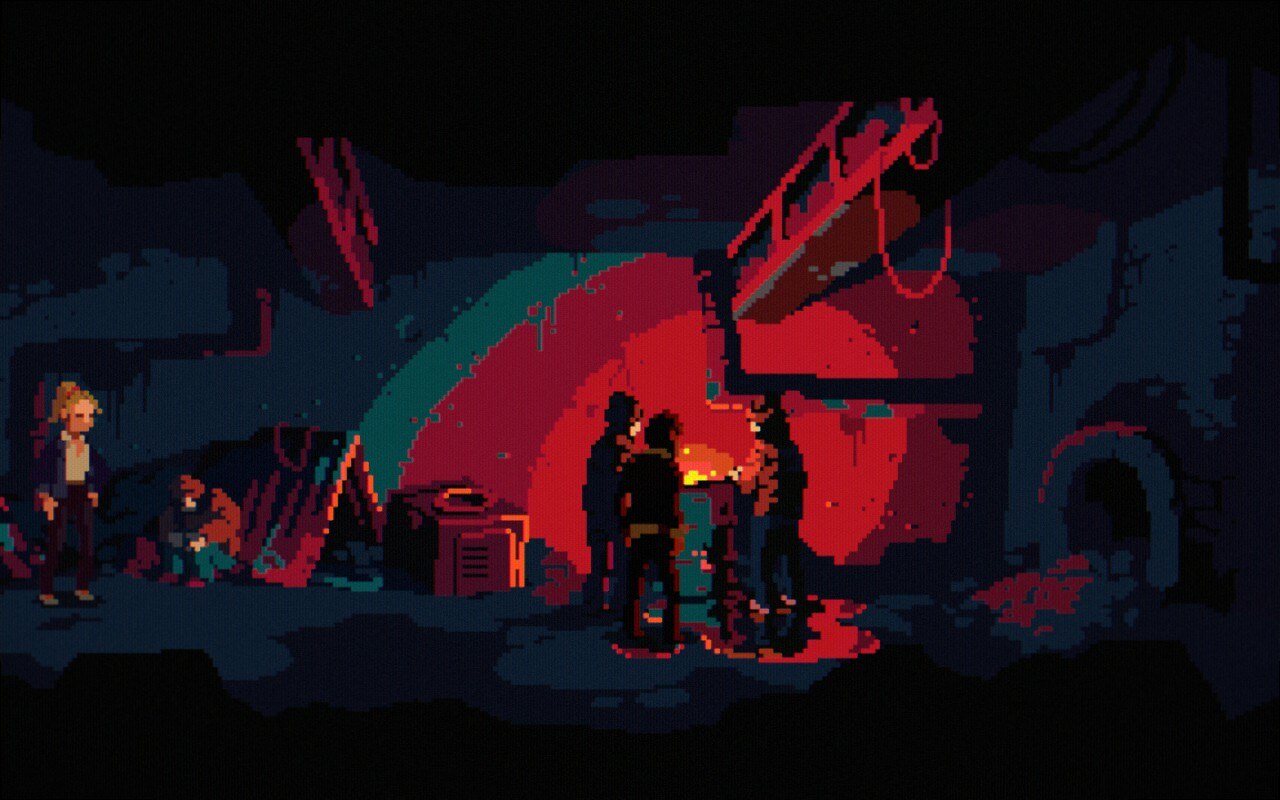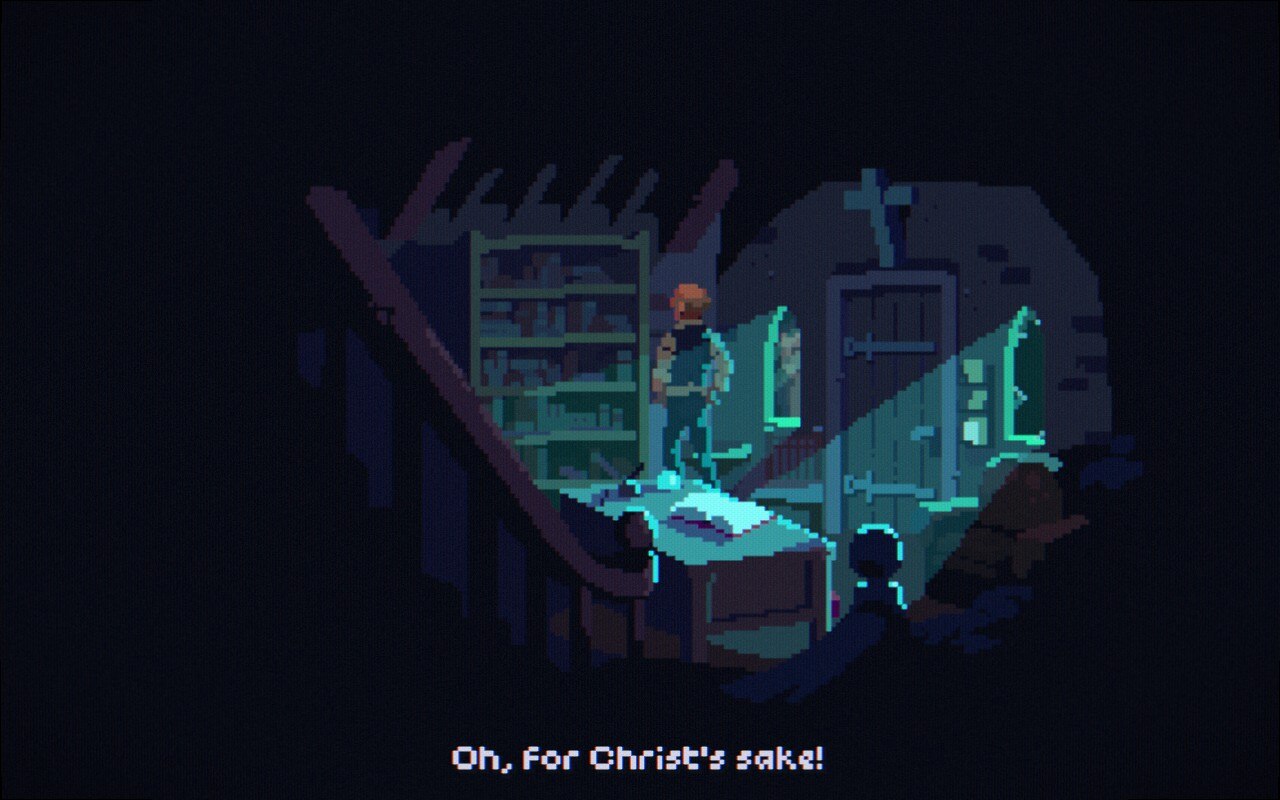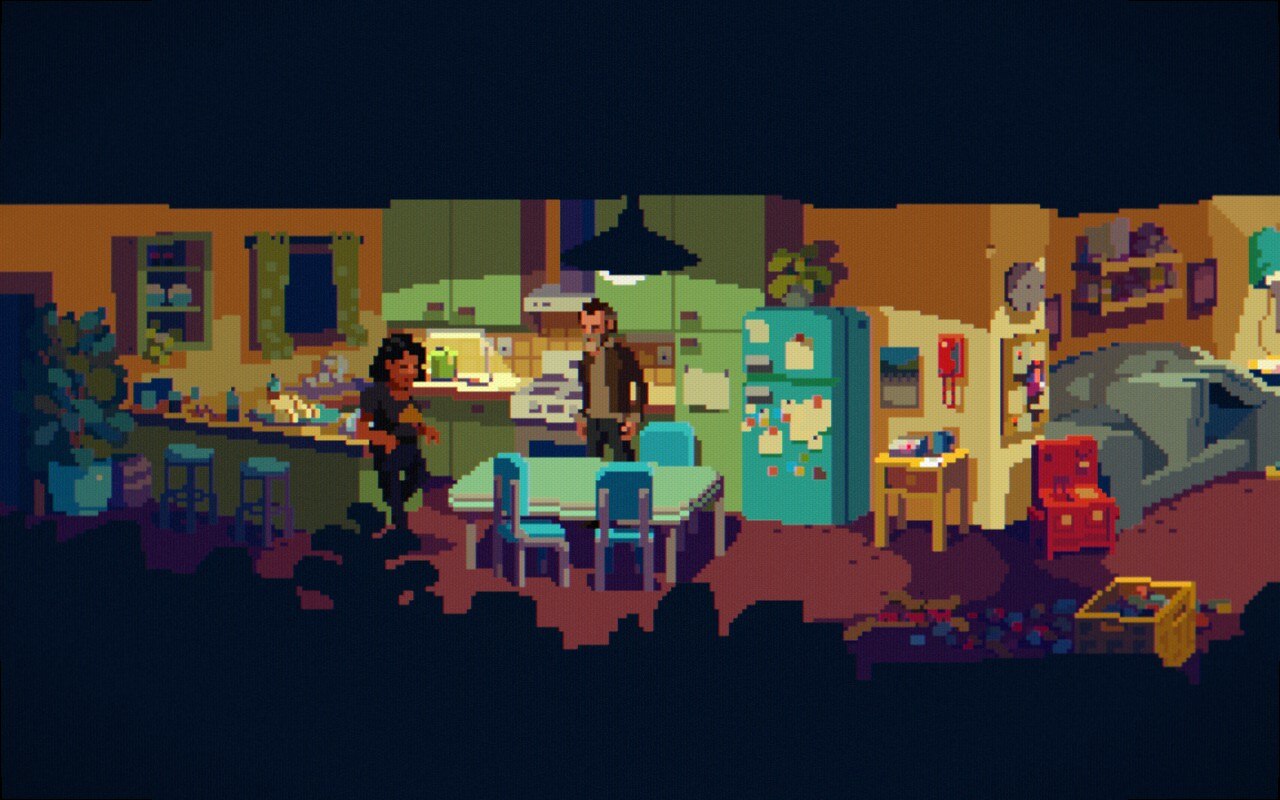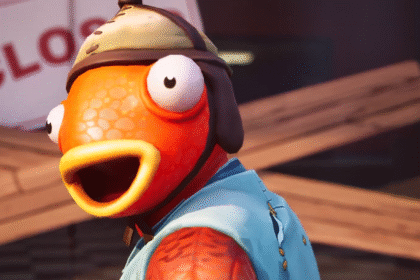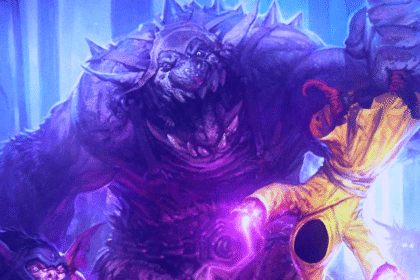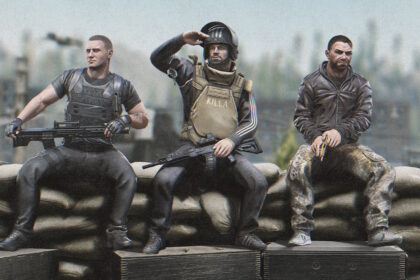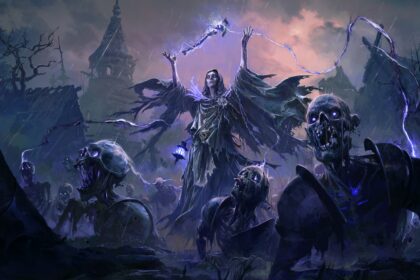Need to know
What is it? A point ‘n’ click “pulp adventure thriller” with true grit.
Release date July 18, 2025
Expect to pay TBC
Developer Powerhoof, Dave Lloyd
Publisher Powerhoof
Reviewed on RTX 3060 (laptop), Ryzen 5 5600H, 16GB RAM
Steam Deck Officially “unknown”, but it runs brilliantly
Link Steam
We meet Mick Carter as a homeless drifter. Due to some unspecified past trauma, he’s abandoned his settled domestic life in a nameless Australian city for a self-flagellating transient existence. He’s en route to home, where he’s been beckoned to attend his mother’s funeral. He does so reluctantly, because it draws him closer to a past he’s deliberately abandoned.
Shit hits the fan immediately. Not only is Mick forcibly ejected from his train carriage by a mysterious, possibly supernatural presence, but he’s then framed for the murder of a homeless man in the seedy railway underpass he finds himself in. At first, The Drifter promises to be a dark character study wrapped in a murder mystery, but it proves to be more—alas, to its detriment.
The Drifter bills itself as a “pulp adventure thriller” and it wastes no time living up to that descriptor. Carter is a depressive but nevertheless oddly calm protagonist, with a familiar—if somewhat antiquated—Australian matter-of-factness about him. He’s downcast, but not entirely ruined. In fact, when a hi-tech conspiracy begins to loom he proves quite resourceful: The Drifter’s point-and-click trappings generally demand MacGyver-like logic, which is to say, an ability to use mundane objects to solve seemingly insurmountable problems.
But The Drifter has quieter, ostensibly more complex ambitions. At first the world presents as a richly down-at-heel urban sprawl. Its lavishly illustrated environs are a potent combination of John Carpenter blight (think They Live, Escape From New York) with film noir tactics. Powerhoof’s pixel art strives towards a painterly, oddly curvaceous semi-realism, darkness and undulating shadows rendering a bleak and forbidding world that still manages to be tastefully colourful and varied. The way Powerhoof frames many of The Drifter’s exterior urban expanses within impermeable darkness lend them the mood of fascinating, sickly dioramas.
The studio has a distinctive approach to pixel art, which is no small feat. It doesn’t rely on the innate charm of the style; it has a certain wobbly, slightly surreal exaggeration to it. This is a very different game from Crawl, but it’s immediately obvious that it comes from the same team.
The Drifter is a joy to behold and interact with. The studio’s approach to urban noir is more traditional compared to the haunted modern listlessness of Norco’s flyover suburbia, for example, but despite the familiarity of a seedy train underpass, or the offices of a dubious tabloid, or a skyline-lit nighttime graveyard, there’s something forbiddingly melancholy about the opening hours. It’s magnetically downcast. But the places I visit vary widely as the story progresses, and the oppressive, noir-ish melancholy flounders as the story moves on.
The point-and-click elements are familiar. Puzzles tend to boil down to executing actions in the right order, combining found objects to make a jury-rigged tool, or compelling certain events to occur to accommodate my objectives. Powerhoof has devised a clever user interface that takes a lot of the tedious guesswork out while also providing ample information about present circumstances, lest one lose (or forget from one session to the next) their way. Lateral thinking is still the order of the day—of course you’d use a small metal tag, retrieved from a bowl, to unscrew a vent!—though problem-solving is generally conducted linearly: there’s no way to be more clever than the prescribed sequence of interactions.
Which is fine, because The Drifter is proud to be a point-and-click adventure; it’s not messing with a format it clearly adores. If anything, it only wants to make it less obtuse and more welcoming.
The Drifter is a finely wrought point ‘n’ click adventure on a mechanical level, with gorgeous art—and the latter cannot be over-emphasised—but its pulp tendencies sit a bit askew from some of its more severe themes. The devastating source of Carter’s jiltedness rubs awkwardly against the high concept sci-fi narrative, which of course involves time travel, albeit towards bleaker ends than the usual “just one more chance” fantasy. Whereas some might want to revisit the past to make good on some otherwise irrevocable failure or shortcoming, Carter just wants to forget his past; he doesn’t want to optimize, he wants to erase, all the better to negate the pain he’s failed to live with.
It’s a refreshingly ruthless, refreshingly human, framing of regret, but as The Drifter moves into labyrinthine sci-fi territory, and as its strands coil around a conspiracy much larger than Carter’s circumstances, the game loses sight of the emotional stakes in favour of the procedural unfolding of wily mad scientist baloney. As the story progressed, I felt more and more remote from Mick Carter.
To Powerhoof’s credit—and there’s a genuine ambition here—this partial failure has a lot to do with the limitations of genre conventions; within the strictures of a loosely side-scrolling and panned out presentation, the subtleties other mediums could use to squeeze feeling out of Carter—expressions, posture etcetera—aren’t available. Once we’ve left the forbidding, narrowed-in cityscapes in favour of more outlandish “pulpish” environs there are fewer opportunities to feel as if we’re commandeering a genuinely shaken character; Carter turns into a fish-out-of-water problem solving avatar with depressive posture. Under these circumstances the emotional impact of his plight is blunted. As a sci-fi thriller, The Drifter is rote.
There’s also the weird tonal inconsistency of the supporting characters, such as Hara, a strangely disinterested investigator who unaccountably morphs into a sidekick figure, and a reporter whose involvement in the unfurling complexity feels increasingly superfluous, not to mention the more intimately involved characters Carter reacquaints with, who are quick to forgive his fleeing.
Can a point-and-click adventure be good if its story doesn’t stick the landing? Powerhoof’s sublime art direction and sensitivity to mood give it immense potential to tell stories like this without resorting to potboiler cliche, and the studio’s approach to UI and puzzle design is impeccable. The Drifter is a great piece of design, but it needed to avoid the easy shelter of pulp to be a fully captivating adventure.
Read the full article here



